“In years with low crop margins, high resolution provides an unquestionable return on investment with both higher yields from accurate fertilizer placement and either lower soil amendment rates or the optimization of existing budgets for soil amendments.“
Published April 12, 2024
By: Steve Redmond; BSc
If you have been “hanging around” the Precision Ag space for more than a few years, then you will understand that there has been an intense debate over the resolution required to create VRT prescriptions for soil amendments. There has been no “resolution” to this academic debate, however as a former SoilOptix® Provider and a purveyor of accuracy, I must declare that if there is a method to provide higher resolution of something as critical as soil physical or chemical properties then there should be no debate whatsoever.
The Customer Needs to Have the Best Resolution
It is not “rocket science” to understand that if I have the technology to both measure and apply soil amendments to small areas of the field and realize a return on investment from doing so then I should seek out an opportunity to make this happen. In fact, as a consultant, you owe it to your clients to give them the best opportunity to enhance production.
This Case Study will focus on a unique situation in the Southern Great Plains area of the United States where SoilOptix® Provider, Chad Godsey of Godsey Ag, has discovered that the ability to provide high resolution mapping and thus high resolution VRT Prescriptions (VRT Scripts) for his clients has reduced the overall use of potassium by identifying both areas of over application of potassium and under-fertilization of small areas where yields have suffered.
The Problem with Low Resolution:
When a consultant uses a “low resolution option”, such as grid soil sampling or satellite imagery, to create zones for VRT Scripts, the resulting Scripts will often miss small areas where fertilizer applications can be reduced. These small areas will thus save the farmer money! In addition, there are often small areas where a higher rate of soil amendment will generate higher yields and thus more profit. The combination of these two critical elements is what drives profitability, especially in years when farmers are facing lower profit margins. An avid crop consultant and/or farmer knows very well that we seem to be faced with more years where profit margins are lower and therefore it is critical that we utilize the best technology and develop the highest resolution maps and VRT Scripts. This will “almost guarantee”[1] profit on every acre.
The Soils and Weather Conditions in the Southern Great Plains
The Great Plains area of North America is a fascinating place. A nice description can be found in the Encyclopedia of the Great Plains[2].
The Great Plains is a vast expanse of grasslands stretching from the Rocky Mountains to the Missouri River, and from the Rio Grande to the coniferous forests of Canada—an area more than eighteen hundred miles from north to south and more than five hundred miles from east to west. The Great Plains region includes all or parts of Texas, New Mexico, Oklahoma, Kansas, Colorado, Nebraska, Wyoming, South Dakota, North Dakota, Montana, Alberta, Saskatchewan, and Manitoba.
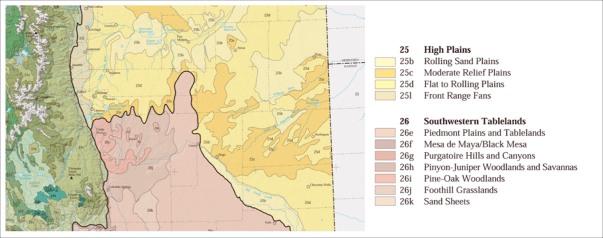
Map image showing the geographical regions of High Plains and Southwestern Tablelands with corresponding coloured legend.
Credit: US-EPA. http://ecologicalregions.info/data/co/co_front.pdf
Godsey Ag offers services across Colorado, Nebraska, Kansas, and the Oklahoma and Texas Panhandles. This area is described as either High Plains or Southwestern Tablelands (see Figure 1) and is part of the Eolian sediment blanket that covers approximately 60 percent of Colorado east of the Rocky Mountains (Madole, 1995a). This Eolian cover contains approximately 30 percent sand and 70 percent is loess.[3]
The uniqueness of the sand soils in this area is that they are “cemented” by calcium carbonate and therefore tend to have a soil pH of 6.5 – 7.8.
The farmers in this area are typically not adjusting the soil pH for optimum yields and this feature is unique in North American soils since, in the Eastern areas, the sands tend to have low levels of calcium and require regular amendments to increase soil pH.
The Great Plains experience a continental climate where cold winters and warm summers prevail, with low precipitation and humidity, much wind, and sudden changes in temperature.
This weather may challenge crop production and farmers need to ensure that soil amendments will provide a return on investment (ROI). If a farmer receives a recommendation for a soil amendment that provides a “static rate”[4], there is a high probability that the rate will be too high in parts of the field and too low in other parts of the field. This problem was understood many years ago and resulted in farmers paying crop consultants, or fertilizer retailers, to provide a grid sample rec[5] that would vary the amendment across the field based on the soil sampling frequency.
The Problem of Low Resolution (as seen by Godsey Ag):
The problem identified by advanced crop consultants, like Chad Godsey, is that the resolution[6] from grid sampling and the resulting grids used for application do NOT take into consideration the incredible variability in physical and chemical soil characteristics of every field or plot of land that grows crops anywhere in the world. Fields with a mixture of sand and loess, managed by Godsey Ag’s clients, will have wide variations in nutrient characteristics that have been difficult to manage using historical soil sampling methods and static rate amendments.
The adoption of gamma radiation mapping and the use of the SoilOptix®- developed maps results in a resolution of these soil properties at a level never-before experienced in agriculture[7]. The final resolution of 335 data points per acre (857/ha) will reveal the areas of concern that require attention, at a level that can not be amended using application technology available in 2024. However, with the ability for section control[8], farmers can now apply amendments in ever decreasing areas allowing VRT Prescriptions to become more precise. This allows the optimization of nutrients and other soil amendments and places them where they should be. The environmental and economic benefits are apparent.
Potassium Levels of the Field in Question:
The field chosen for this Case Study has Potassium levels that vary from 90 – 270 ppm (Figure 2) and a Base Saturation Layer that demonstrates a range of 4.5% – 11.25% (Figure 3).
The correlation of these two measurements of soil potassium is quite high and has allowed Godsey Ag to develop VRT Scripts that apply potassium efficiently to all areas.
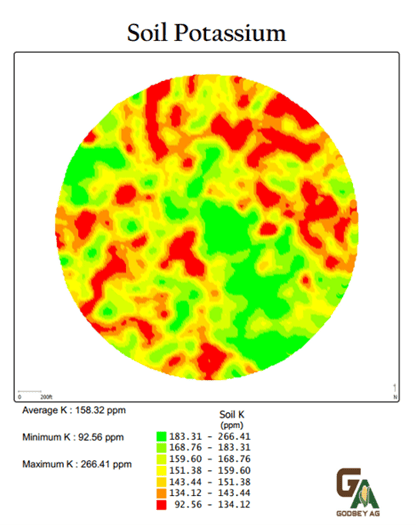
SoilOptix® high resolution layer showing soil potassium as parts per million (ppm)
The variability in this field ranges from 92 to over 260 ppm.
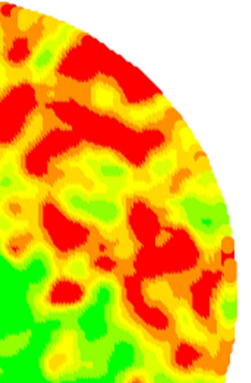
The northeast section of this field mapped with SoilOptix® shows the incredible variability in the potassium level.
The actual range is 92 to 250 + ppm.
Significant $ can be saved with SoilOptix® high resolution.
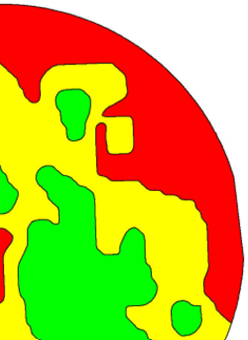
Zone Script for Muriate of Potash (K20)
There are significant areas that would receive over application of K20 under a Zone Script that attempts to build the Red areas while ignoring the areas with sufficient-to-high levels of potassium.
Cost Savings using SoilOptix®:
The reduction in soil amendment applications by using SoilOptix® technology is significant as it allows the consultant to reduce application rates on the high testing areas. Depending on the ability of the application equipment to utilize Section Control, the farmer can realize large savings in the cost of soil amendments.
Figure 5 shows that VRT Scripting using a SoilOptix® Layer provides an average rate of Muriate of Potash of 50.13 lbs/acre.
In contrast, a VRT Script developed from Zones (Figure 6), developed from normalized yield is recommending an average application rate of Muriate of Potash of 58.64 lbs/acre.
The SoilOptix®-derived application has a fertilizer reduction of 15%.
When muriate of potash price is $350 US/ton[9], this represents a cost savings of $2.25/acre.
Since the SoilOptix® maps can be used for several years and for other soil amendments, it is easy to calculate a positive return on investment (ROI).
Improvements in Yield and Quality:
The other window that utilization of SoilOptix® mapping opens is the realization of yield improvements in areas that are deficient and the increase in crop quality that often is realized from improved disease and pest control from healthy plants.
Crop Removal Rates vs. Higher Rates to Build the Soil Levels
In conversation with Chad, we discussed the current profit margins (2024 growing season) and how many farmers are approaching soil amendments and overall fertilizer use.
In a perfect world where cash and annual profitability was not a concern, we would take a more aggressive approach to “fixing” the low potassium areas of the field. However, in a year with low crop margins, the approach is to use Crop Removal rates for the chosen crop and add a small amount above crop removal, such that we are confident that the low levels of potassium will not drop any lower.
VRT Prescriptions for Muriate of Potash (K20)
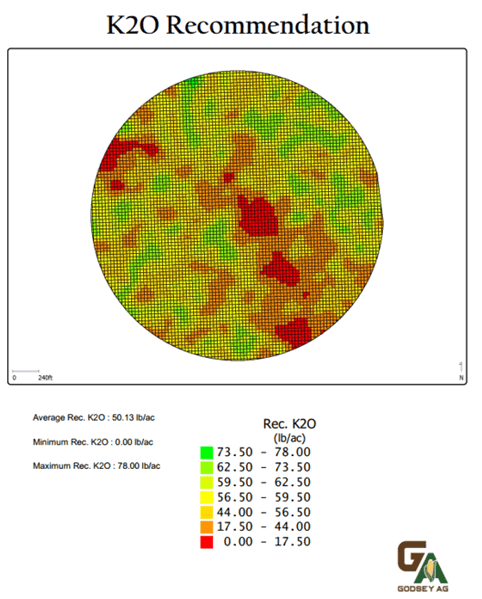
VRT Script for Muriate of Potash (K20) developed from SoilOptix® high resolution data.
Average rate of K20 is 50.13 lbs/acre
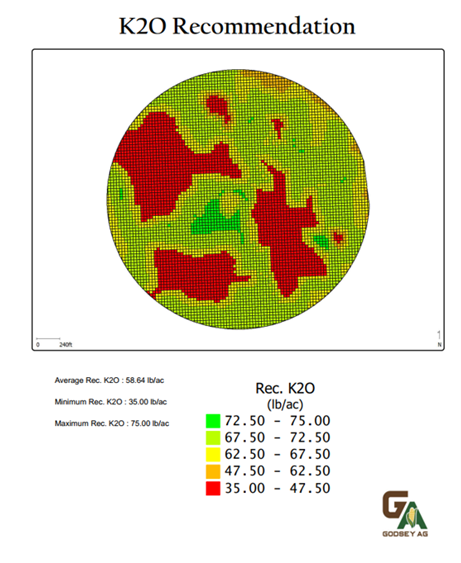
VRT Script for Muriate of Potash (K20) developed from Zones.
Average rate of K20 is 58.64 lbs/acre
Changing Rates Quickly
One of the services that a crop consultant can offer is that when the scripts are developed in the winter months during the planning stage of the cropping cycle and then grain markets or fertilizer pricing changes dramatically, the rates of fertilizer can be easily changed to provide a stronger “build”. Most rate controllers on VRT fertilizer applicators also have the option to add a percentage to the script, i.e. the rates can be increased in all zones by 25%.
Conclusions
This Case Study is strong, scientific evidence that professional, highly educated, and trained crop consultants, such as Chad Godsey and the team at Godsey Ag, can use high resolution soil mapping and the resulting high resolution SoilOptix® Layers to develop high resolution VRT Prescriptions for their clients.
In years with low crop margins, this high resolution provides an unquestionable return on investment with both higher yields from accurate fertilizer placement and either lower soil amendment rates or the optimization of existing budgets for soil amendments.
SoilOptix® Service Provider Profile
Chad Godsey, B.S. M.S. PhD
Godsey Ag
Colorado, USA
Born and raised on a farm in northeastern Colorado, USA, Chad graduated from Colorado State University with his B.S. in Ag Business and Soil and Crop Sciences, followed by his M.S. and PhD in Agronomy/Soil Fertility from Kansas State University. After graduation, Chad worked at Oklahoma State University as a Cropping System Specialist, where he gained years of experience and research work focused on increasing crop production efficiency through technology, no-tillage, and crop rotation.
After noticing a disconnect between the precision ag industry and past university-led research on proven technologies, Godsey Ag was born with the goal of providing services to help producers better utilize precision ag technologies to increase profitability- including the use of SoilOptix® topsoil mapping solution.
Godsey Ag has been a SoilOptix® Service Provider & Distributor since 2020, offering services to their direct customers as well as managing numerous sub-dealers, including Great Plains Precision Ag & 4AgTech, to cover Colorado, Nebraska, Kansas, and the Oklahoma and Texas Panhandles.
Connect with Chad directly at:
(+1) 970-481-0801
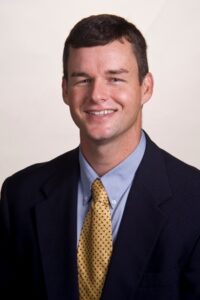
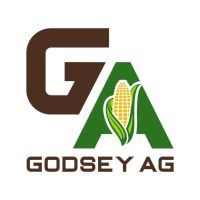
Footnotes:
[1] Of course, we all know that you there are no “guarantees” in life, especially farming as Mother Nature is on control.
[2] http://plainshumanities.unl.edu/encyclopedia/intro.html
[3] Loess is a sedimentary deposit, deposited by wind, composed largely of silt-size grains that are loosely cemented by calcium carbonate.
[4] A static rate, in this context, refers to a rate that does not vary across a given field.
[5] A grid sample rec is a recommendation for a soil amendment based on a sampling frequency of 1 – 5 acres (0.4 – 2 hectares)
[6] Resolution refers to the soil sampling frequency, i.e. a 1-acre grid can only be amended at a resolution 1-acre or greater.
[7] Https://soiloptix.com/case_studies/from-start-to-finish-how-soiloptix-technology-works/
[8] Section control is the ability to control the rate of application on various sections across the equipment.
[9] https://www.dtnpf.com/agriculture/web/ag/crops/article/2023/12/14/positive-potash-outlook-seen-lower
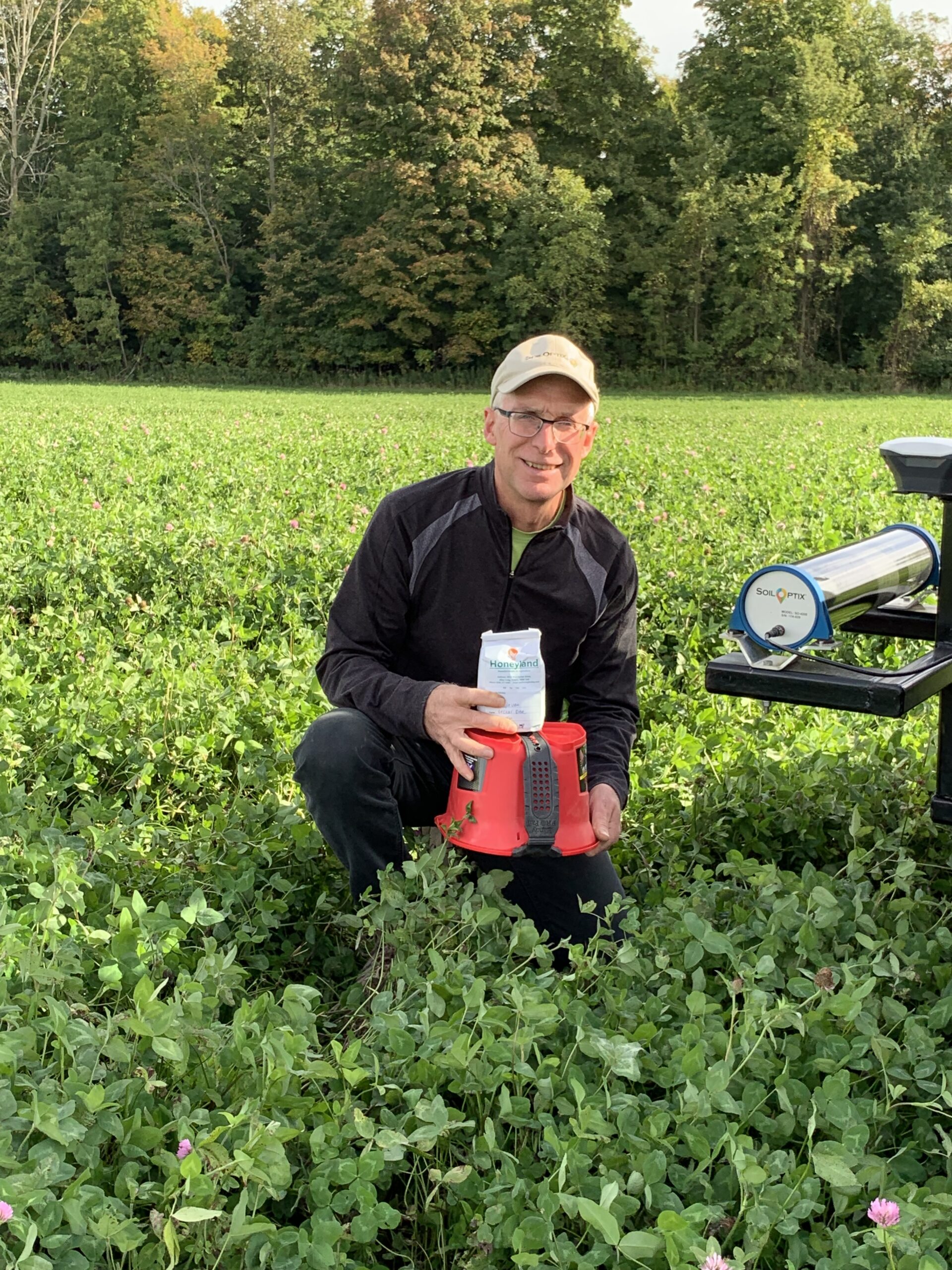
About The Author
Steve Redmond; BSc
Steve Redmond has 35+ years of agricultural experience including crop protection roles in R&D and technical support, seed sales, environmental/nutrient management, soil sampling and fertility recommendations. His experience with Wintex soil samplers, an Aeryon Scout drone, GreenSeeker/Y-Drop applicators and NDVI imagery, VRT seeding and fungicide applications prepared him to enthusiastically embrace the SoilOptix® sensor technology. Now semi-retired, Steve continues to work on projects of interest including “SoilOptix® Agronomy”, balanced nutrition for culinary farms and Irish history.
Connect with Steve:
